Acetate eyewear design requires a strategic balance between fashion-led aesthetics and function-led performance. A fashion-first approach uses bold designs and rich colors for trend-focused markets, while a function-first approach prioritizes durability, comfort, and hypoallergenic properties for practicality-focused users. Both are valid strategies within the global eyewear market, valued at over $155 billion in 2024, which shows strong demand for premium materials like acetate.
Understanding the Core Design Strategies
To make smart decisions for your brand, you first need to understand the two primary philosophies that guide acetate eyewear design. Think of them as two ends of a spectrum. Your goal is not to choose one over the other but to find the perfect point on that spectrum that aligns with your brand identity, target market, and business objectives.
“Fashion-Led” Design: Aesthetics First
A “fashion-led” design strategy prioritizes the visual and emotional impact of the eyewear. Here, the frame is a primary fashion accessory and a powerful tool for brand storytelling. This approach celebrates acetate’s incredible versatility in color, pattern, and form to create a true statement piece. When you lead with fashion, you use the frame’s aesthetic to communicate a specific identity—luxury, creativity, or avant-garde confidence.
“Function-Led” Design: Performance is Paramount
A “function-led” design strategy, on the other hand, prioritizes the user’s physical experience and the product’s long-term performance. This approach focuses on the inherent material science of acetate. Because it is a durable, flexible, and lightweight material, it is exceptionally comfortable for all-day wear. Here, design choices serve practical ends, leading to higher satisfaction, better reviews, and fewer returns.
The Goal: Finding Your Strategic Balance
The most successful brands rarely exist at the absolute extremes; instead, they find a strategic balance that feels authentic. A luxury fashion house might create a visually stunning, thick acetate frame but will still engineer it for balanced weight distribution. Your job is to understand these trade-offs by asking the right questions. Does your customer value a bold look over featherlight comfort? Does your brand story require a custom pattern that might increase costs?
The Bottom Line: Every choice you make about an acetate frame—from its thickness to its finish—is a business decision. A thicker frame communicates luxury but uses more raw material, increasing unit cost. A custom color pattern creates a proprietary look but may require a higher minimum order quantity (MOQ). Understanding this connection is what elevates a designer into a strategic product developer.
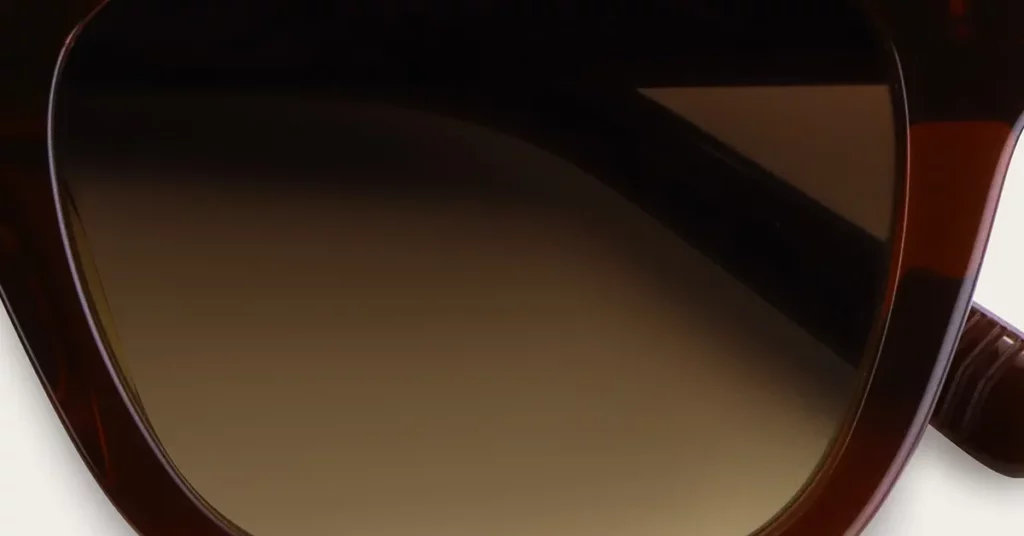
A Quick Comparison: Fashion vs. Function
To make these concepts even clearer, this table helps you quickly identify the core drivers and potential pitfalls of each approach. Use this as a foundational tool when briefing your design team or evaluating prototypes.
| Feature | Fashion-Led Design | Function-Led Design |
| Core Driver | Brand Statement & Aesthetics | User Comfort & Performance |
| Target Market | Trend-Focused & Expressive | Practicality-Focused & All-Day Wear |
| Key Material Trait | Color & Pattern Richness | Durability & Lightweight Feel |
| Common Pitfall | Can be Impractical or Uncomfortable | Can be Aesthetically Undesirable |
Pro Tip: Your target market heavily influences your design strategy. A fashion-forward customer sees eyewear as part of their personal style and will embrace bolder designs. A practicality-focused customer needs a frame that performs reliably day-in and day-out, valuing comfort and durability over seasonal trends. Always start with your customer.
Critical Warning: Each approach has a potential pitfall. A design that is purely fashion-led can become impractical—too heavy, uncomfortable, or unable to hold a complex prescription. A design that is purely function-led can become aesthetically bland, failing to create the emotional connection needed to command a premium price or build brand loyalty.
The Acetate Design & Application Framework
Now, let’s move from theory to a practical tool. Over my two decades in this industry, I’ve developed this B2B decision matrix to help brands make smarter, more strategic decisions. It connects a specific design choice to its implications for your brand, customer, and budget, forcing you to think through the consequences of every detail.
| Key Design Feature | “Fashion” Implication (Brand Archetype) | “Function” Implication (Use-Case/Performance) | Business Constraint (Cost, Sourcing, MOQ) |
| Thick Frame (6-8mm) | Luxury, Bold, Heritage, Statement | Ideal for high-prescription lenses; Heavier feel | Higher material cost per unit; Longer polishing time |
| Thin Frame (2-3mm) | Minimalist, Modern, Understated | Lightweight for all-day comfort; Best for low prescriptions | Requires high-density acetate for stability |
| Custom Pattern | Creative, Proprietary, Exclusive | Creates a unique brand identifier | Higher sourcing cost; Subject to supplier MOQs |
| Classic Tortoiseshell | Timeless, Academic, Versatile | Complements a wide range of skin tones | Widely available; More cost-effective |
| Matte Finish | Contemporary, Subtle, Tech-focused | Hides fingerprints; Can be harder to clean | Requires specific finishing process (bead-blasting) |
| Hand-Polished Gloss | Premium, Classic, Luxurious | Smooth, rich feel; Shows fingerprints more easily | Labor-intensive process, increasing unit cost |
How to De-Risk Your Product Launch
This framework is a step-by-step process to guide your product development and avoid the common pitfall of creating a product that is misaligned with your market.
- Define Your Brand Archetype: Before sketching, be crystal clear about who you are. A “Luxury Heritage” brand values craftsmanship, while a “Modern Minimalist” brand prizes clean design and practicality. Define this first.
- Map Archetype to “Fashion” Features: Use the “Fashion” column to identify aligned design features. A “Luxury Heritage” brand fits a “Thick Frame” and “Hand-Polished Gloss.” A “Modern Minimalist” gravitates towards a “Thin Frame” and “Matte Finish.”
- Analyze the Trade-Offs: This is the most critical step. For each feature you’ve selected, honestly assess the corresponding “Function” and “Constraint” implications. A thick frame may be perfect for your brand image, but are you prepared for the higher unit cost?
- Make a Data-Informed Decision: You can now make a balanced, strategic decision. You might decide the brand statement of a thick frame is worth the extra cost, or you might opt for a medium-thickness frame. This process ensures your final design is a deliberate choice that serves your business goals.
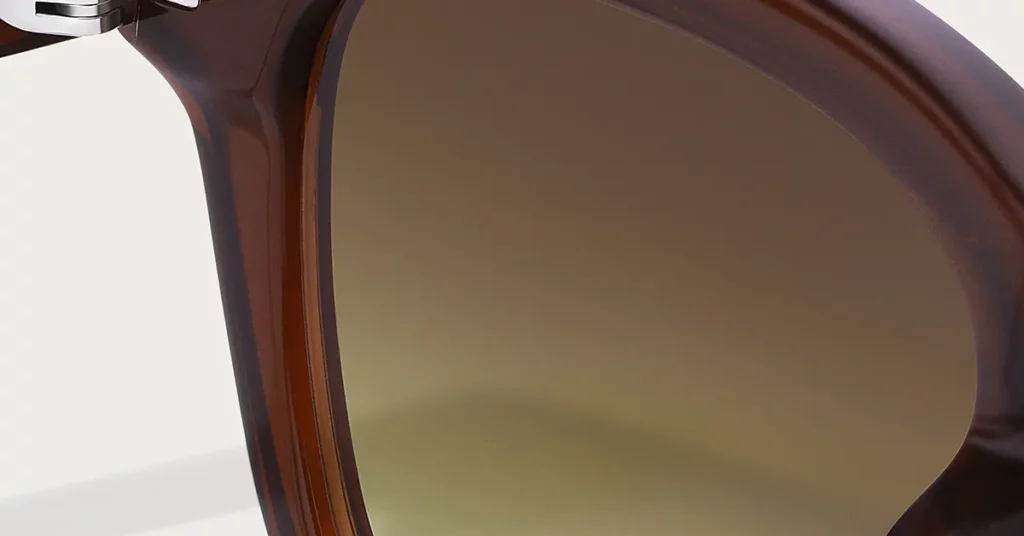
Case Studies in Strategy
Case Study: A “Fashion-First” Success
- The Goal: A bold, luxury statement piece for a high-fashion brand. The primary goal is not volume sales but to create a “halo” product that embodies the brand’s artistic and luxurious identity.
- The Choice: An 8mm thick Italian block acetate with a custom-laminated color pattern from a supplier like Mazzucchelli. The frame is finished with a meticulous, multi-stage hand polish to achieve a deep, liquid gloss.
- The Trade-Off: The brand accepts that the frame will be heavier and more expensive to produce. These functional and business constraints are secondary to the primary goal of making a powerful brand statement.
- The Success: The product becomes a recognizable and coveted signature item. Because the design is unique and the quality is apparent, the brand can command a premium price, justifying the higher cost of goods.
Case Study: A “Function-First” Success
- The Goal: An all-day-wear frame for a modern, direct-to-consumer brand. Success depends on excellent customer reviews, low return rates, and repeat purchases from young professionals who need a reliable, versatile frame.
- The Choice: A thin, 2.5mm profile for a lightweight feel. To ensure this thin design is stable and durable, the brand sources a high-density Japanese acetate. The shape is timeless and the color palette is classic to maximize appeal.
- The Trade-Off: The brand accepts that this design will not be as visually arresting as a chunky frame. The brand’s story focuses on comfort and quality, not on making a bold fashion statement.
- The Success: The product is a commercial hit. Customer reviews consistently praise the frame’s lightweight comfort, leading to strong word-of-mouth marketing. The low return rate and high satisfaction build a loyal following and drive high-volume sales.
The “Fashion” Axis: A Deep Dive into Aesthetics
Frame Thickness as a Brand Signifier
One of the most powerful ways you can signal your brand’s identity is through the thickness of your acetate frames. This single choice communicates a wealth of information about your product’s intended market, price point, and personality.
- Thick/Chunky Frames (4mm-10mm+): These frames are a statement. The physical and visual weight communicates confidence, luxury, and heritage. This style is perfect for high-fashion brands that want their eyewear to be a focal point, exuding an artistic or architectural vibe.
- Thin/Slim Frames (1.5mm-3mm): Thin acetate frames are all about sleekness and comfort. Their slim profile caters to a minimalist aesthetic, communicating modernity, intelligence, and a focus on practical elegance. They are an ideal choice for brands targeting customers who value a clean, uncluttered look.
Pro Tip: There is a powerful psychological link between a frame’s perceived weight and its perceived value. A consumer picking up a substantial, dense acetate frame will instinctively associate it with higher quality and be less surprised by a premium price tag. Ensure your design’s physical presence aligns with your pricing strategy.
Color and Pattern as Your Advantage
Beyond shape, acetate’s most celebrated quality is its unparalleled capacity for rich color and intricate patterns. Unlike injection-molded plastic where color is a surface-level spray, acetate’s color is embedded throughout the material, creating a deep, vibrant look that can become a powerful competitive advantage.
- Custom Acetate: Developing a custom color or unique laminated pattern creates an asset no competitor can replicate. This proprietary look becomes a core part of your brand DNA, making your products instantly recognizable.
- Tortoiseshell & Classics: This timeless pattern’s organic blend creates a warm, versatile look perfect for a professional, academic, or heritage-inspired aesthetic. It communicates intelligence and classic style.
- Vibrant Solids: Bold colors like a vibrant red or deep blue are perfect for fashion-forward brands that want to make a strong, confident statement. They appeal to creative and expressive customers.
- Translucent & Crystal: These frames have a minimalist and modern appeal. They offer a subtle, chic look and can also be used to showcase the craftsmanship of the embedded metal wire core in the temples.
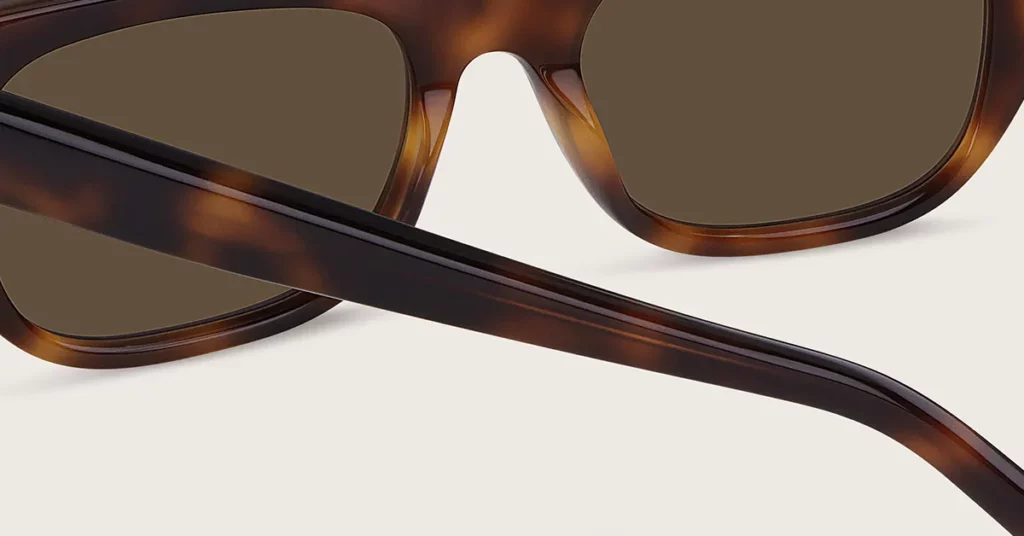
The “Function” Axis: Material Science & Performance
While aesthetics create desire, it’s the functional performance of acetate that builds long-term customer loyalty. Understanding the material science is key to recognizing the tangible business benefits that directly impact your bottom line.
Benefit: Hypoallergenic Nature
Definition: Because it is plant-based (derived from cotton and wood pulp), high-quality acetate is hypoallergenic. This means it is far less likely to cause skin irritation compared to petroleum-based plastics or metal frames containing nickel.
Simple Analogy: Think of it like the difference between a 100% cotton shirt and a cheap synthetic one. For people with sensitive skin, the natural material provides a much more comfortable experience. This directly translates to fewer customer complaints and returns related to skin irritation.
Benefit: Lightweight Strength
Despite its strength, acetate is surprisingly lightweight. This quality is fundamental to creating a frame that is comfortable for all-day wear, without putting undue pressure on the wearer’s nose or ears. This comfort is a common reason for positive customer reviews, which are essential for driving sales in a competitive online marketplace.
Benefit: Rich, Lasting Color
The color in an acetate frame is embedded deep within the material, not sprayed on the surface. This means the color and pattern will not fade, chip, or rub off over time. For your brand, this ensures long-term product integrity, as your customers receive a product that maintains its beauty and reinforces their perception of quality.
Benefit: Superior Adjustability
Acetate frames are easy for an optician to adjust. When gently heated, the material becomes pliable, allowing it to be shaped for a perfect, custom fit to the wearer’s face. This superior adjustability means fewer returns due to poor fit and a product that can be tailored to a wider range of customers.
How Design Impacts Optical Performance
The design of your frame has a direct impact on its optical performance and suitability for different prescription lenses. Understanding these functional constraints is crucial for creating a product that is both beautiful and effective.
- Thick Frames: These are an excellent choice for customers with high-strength prescriptions. A chunky frame can effectively hide the thickness of a lens at its edge, resulting in a more aesthetically pleasing look.
- Thin Frames: While elegant, thin frames are best suited for wearers with low-to-mid-strength prescriptions. High-power lenses can look bulky and protrude from a slim frame, creating an undesirable “coke bottle” effect.
- Bridge & Nose Pad Design: A well-designed “low bridge” or “alternative fit” frame will have larger, bolstered nose pads. This provides a secure fit on individuals with lower nose bridges, preventing the glasses from sliding down and demonstrating a key functional differentiator.
Sourcing Origin as a Functional Choice
Where you source your acetate from is a strategic decision. The two global leaders, Italy and Japan, produce acetates with distinct properties. In my experience, understanding these differences allows you to match the material to your design intent with greater precision.
You need to understand that the choice between Italian and Japanese acetate is about matching material properties to your design’s core purpose. Italian acetate’s slightly softer nature makes it perfect for creative, artistic sculpting. Think of it like working with a high-quality modeling clay that can be shaped into complex, beautiful forms. Japanese acetate’s density provides structural integrity, which is essential for thin, minimalist designs that require unwavering stability.
- Italian Acetate (e.g., Mazzucchelli): Known for being slightly softer and more malleable, this material is ideal for crafting and sculpting bold, expressive, and three-dimensional shapes. It also allows for the richest and most vibrant color combinations in the world.
- Japanese Acetate (e.g., Takiron): Generally harder and more dense, this material is exceptionally stable, so it holds its shape perfectly over time. This is a huge functional advantage for minimalist designs, as it allows for very thin profiles without sacrificing strength.
The Bottom Line: Your choice of acetate should be a direct reflection of your design goals. For a complex, sculptural frame with deep colors, choose Italian acetate. For an ultra-thin, minimalist frame that needs to remain perfectly stable, the hardness of Japanese acetate provides the necessary performance.

Manufacturing Realities: How Production Shapes Design
To truly understand acetate, you must understand how it’s made. The difference between a premium acetate frame and a cheap “plastic” one comes down to the manufacturing process. This distinction is the single biggest differentiator in quality.
The Premium “Block Acetate” Process
Premium frames are cut from a solid block or sheet of acetate, like a sculpture. Cheap frames are mass-produced by injecting melted plastic into a mold, like a toy. This “subtractive” process of cutting from a block is what allows for such vibrant, deep colors and patterns, as they are part of the block itself.
A Clarity Bridge on Block Acetate
You need to understand that cutting from a block is fundamentally about preserving the integrity and depth of the material. This means that instead of just applying color to a surface, the intricate patterns and rich hues are layered all the way through the acetate sheet. Think of it like the difference between a printed wood-grain laminate and a solid piece of oak—the solid oak has a depth, authenticity, and durability that the surface-level imitation can never match.
After being cut, frame components are tumbled with wood chips for hours to smooth the edges. Then, each frame is polished by hand by a skilled artisan. This labor-intensive, multi-stage process brings out the deep, lasting luster and is a hallmark of true craftsmanship.
Common Mistake: Many brands use the term “acetate” loosely. A key red flag for inferior quality is injection molding. In this process, melted plastic pellets are injected into a mold. Color is then sprayed on, meaning it can easily chip or fade. If you can see a seam or mold line on the frame, you are looking at a lower-quality product.
How Production Constrains Your Design
Your most creative idea is only as good as its manufacturability. Understanding the real-world production constraints of acetate is essential for planning your launch and managing your budget.
- Material Curing Time: Before a block of acetate can be cut, it must be cured in ovens for several weeks to remove moisture. Rushing this critical step is a major quality risk, as improperly cured acetate can become brittle or warp after the frame is made.
- Labor-Intensive Polishing: The hand-polishing process is what gives acetate its luxurious finish, but it requires great skill. This manual labor is a significant component of the final unit cost, and more complex designs require more time.
- Sourcing MOQs: If you want a proprietary acetate pattern, you must be prepared to meet the Minimum Order Quantity (MOQ) set by the supplier. This can require a commitment to a substantial volume of material.
- Full Production Cycle Time: From material preparation to final assembly, the entire production cycle for a batch of acetate glasses is approximately 55-60 days. You must factor this extended lead time into your product development calendar.
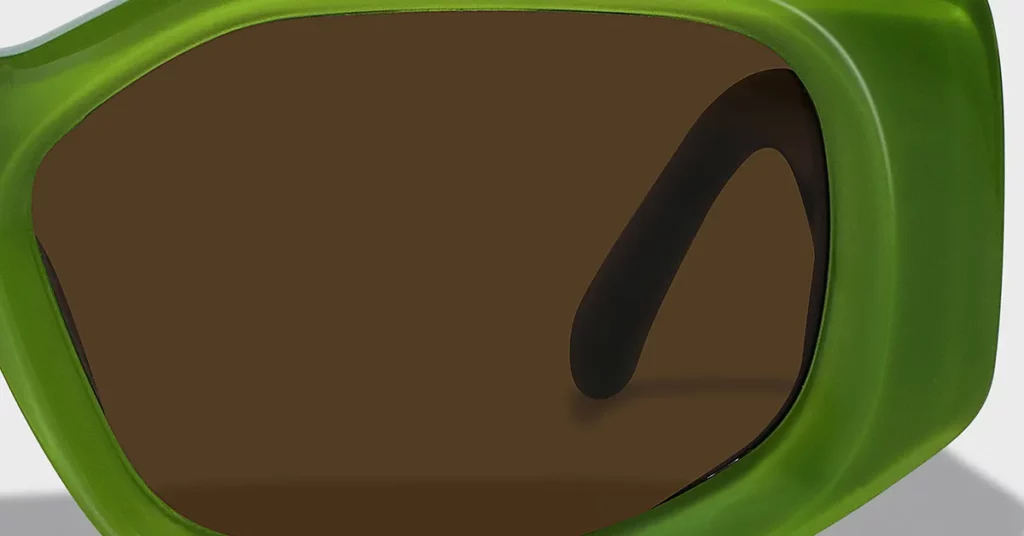
Quality Assurance: Your Guide to Spotting a Superior Product
When you receive your first samples, you need to know what to look for. Your ability to spot the difference between high and low quality is your last line of defense in protecting your brand’s reputation. Here is a simple, hands-on checklist.
Markers of a Premium Acetate Frame
- The “Feel” Test: A high-quality frame should feel substantial but not overly heavy. It should have a smooth, almost liquid-like surface and a slightly warm, organic feel, unlike the cold, hard feel of cheap plastic.
- The Finish: Inspect the surface under good light. A premium frame will have a deep, consistent gloss with no hazy spots. Critically, there should be absolutely no molding seams or lines.
- The Color Depth: Look at the color, especially on the edges. The pattern should be embedded deep into the material, creating a richness that is not possible with surface-level paint.
- The Wire Core: You should see a metal wire core embedded within the temples (arms). In a quality frame, this core will be perfectly centered and cleanly embedded, with no air bubbles.
Common Manufacturing Defects to Spot
- Improperly Cured Acetate: If a frame feels unusually stiff and brittle, or if it cracks easily during adjustment, the acetate was likely not cured properly. This is a critical failure that compromises the entire product.
- Poor Hinge Installation: Hinges should be set perfectly flush with the acetate surface, with no gaps. The action should be smooth and consistent—not too tight and not too loose.
- Hazy or Inconsistent Polish: Look for any dull, milky, or hazy patches, particularly around nose pads or behind hinges. This is a clear sign of rushed production and a lack of attention to detail.
Conclusion
You now have a strategic framework for making smarter decisions about your acetate eyewear. By understanding the poles of “fashion-led” and “function-led” design, you can consciously choose the features that align with your brand. Remember that every design choice is a business decision with clear trade-offs in brand perception, user experience, and cost. Always start with a deep understanding of your brand identity and your target customer, as this will guide you to creating the right frame for your business.
Navigating these decisions can be complex, and that’s why we believe in being more than just a manufacturer—we are a strategic partner. With two decades of experience, we help brands like yours translate their vision into a tangible, high-quality product. We can guide you through the intricacies of material selection, design engineering, and quality assurance, ensuring the final product perfectly balances your fashion goals with the functional excellence your customers deserve.
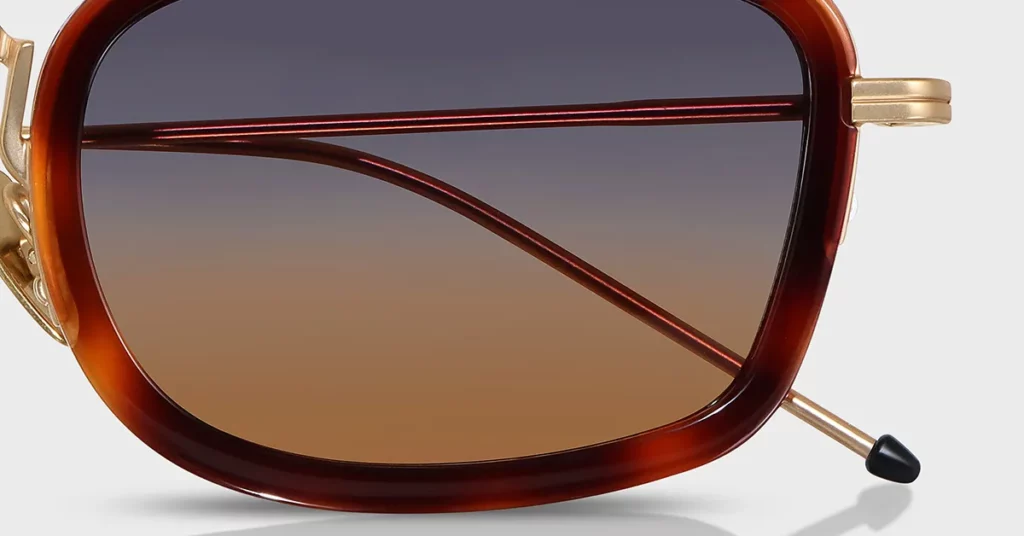
Frequently Asked Questions
1. How does frame thickness affect my per-unit production cost?
Frame thickness impacts your cost in two ways. First, a thicker frame requires more raw acetate, increasing material cost. Second, thicker frames require more time in the labor-intensive CNC milling and hand-polishing stages, which increases labor cost.
2. What is the typical MOQ for a custom acetate color or pattern?
While it varies, the Minimum Order Quantity (MOQ) from a premium mill like Mazzucchelli can be several hundred kilograms of raw material. This is a significant investment, often best suited for established brands creating a proprietary look.
3. Why is Italian acetate from Mazzucchelli the “gold standard” for fashion?
Mazzucchelli, founded in 1849, is considered the “gold standard” due to its unparalleled history and innovation in color. Their process results in a material with unmatched depth and vibrancy, excellent for sculpting the bold, artistic shapes favored by high-fashion brands.
4. Is “bio-acetate” a good option for a new, sustainable brand?
Absolutely. Bio-acetate, which uses a plant-based plasticizer to make it biodegradable, has emerged as a popular alternative. For a new brand focused on sustainability, using bio-acetate is a powerful marketing story and a tangible way to align your product with your brand values.
5. How do I ensure my design is suitable for a wide range of prescription lenses?
Consult with your manufacturing partner during the design phase. As a general rule, frames with a smaller eye size and a thicker profile are more versatile for high-power prescriptions. Avoid very large or dramatically curved frames to accommodate a wider range of lenses.


